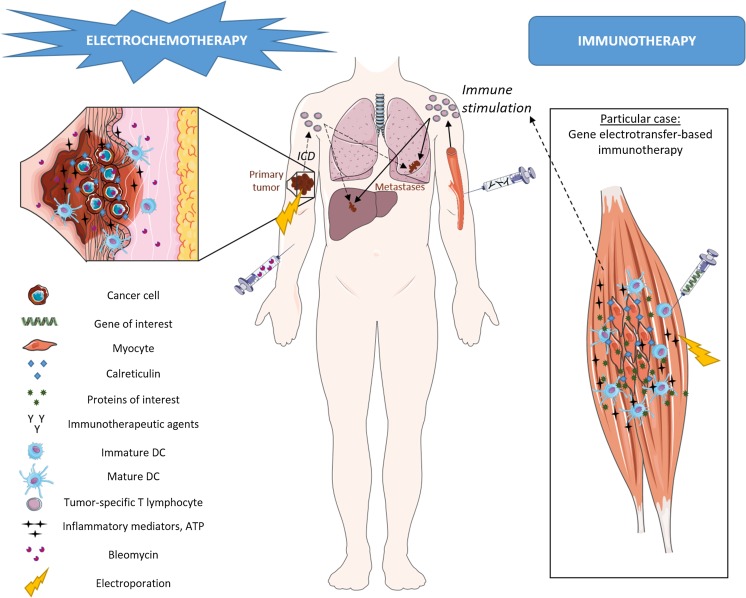Fig. 2.
Combination of anti-tumor electrochemotherapy with immunotherapy for long-term and systemic anti-tumor responses. left Anti-tumor ECT consists in the injection of non- or low-permeant anti-cancer drugs, such as bleomycin and cisplatin, followed by electroporation to enhance cell permeability. Because of the direct cytotoxicity of the drug toward dividing cells, most cancer cells are driven into death. The remaining viable cancer cells within the treated tumor can be destroyed by tumor-specific T cells, primed in the context of ECT-mediated immunogenic cell death (ICD). Theoretically, these tumor-specific T cells can also target metastatic nodules, although there is a lack of direct evidence in the absence of a complementary immune stimulation. right Immunotherapy agents (e.g., cytokines, therapeutic antibodies, immune checkpoint blockers, and genes) mount immune responses that could potentially be synergistic with the one triggered by ECT. More specifically, immunostimulating EGT triggers specific (DNA vaccination) or unspecific (cytokine-based EGT) immune responses against cancer cells leading to their eradication, no matter where they are located in the body. In all, the combination of ECT with immunotherapy, including those based on EGT, is an elegant strategy to treat both the primary tumors and to kill any other cancer cells in the body

